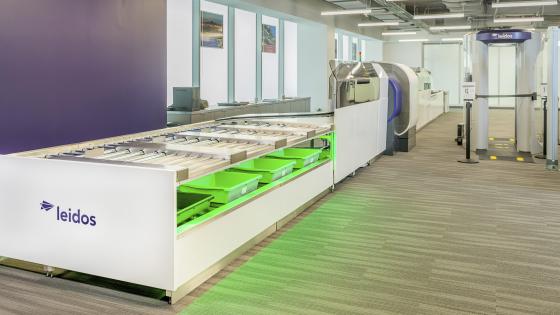Brad Buswell is senior vice-president and operations manager for Leidos, a global leader in security solutions for airports, ports, borders, and critical infrastructure customers. Here, he shares his thoughts on security checkpoints and where technology is headed in the future.
What is the biggest challenge facing airports today?
Airports are in a constant battle, balancing the safety and security of the travelling public with moving passengers quickly and comfortably through the screening process. They are assessing the current state of their checkpoints, while evaluating new technologies that can meet present and future needs. Budgets are always tight, making these capital investments critical business decisions with long-term implications.

Brad Buswell, Leidos' senior vice-president and operations manager
How can these challenges be tackled?
By leveraging the latest technologies, airports can move passengers more quickly through checkpoints, achieve the highest level of threat detection and deliver a better experience for passengers. First, airport operators must develop a checkpoint roadmap that is responsive to needs as they change over time. They should look at the overall system of systems and invest in technology that will support an optimised concept of operations (CONOPs).
Defining the optimal CONOPs requires airports to think about how these upgrades will fit into the overall flow of passengers, the current and future checkpoint footprint and the desired throughput rate. They must also factor in where they anticipate growth.
What has the airports sector learned from the pandemic and ensuing recovery period?
This industry is resilient. We are more agile post COVID-19, capable of implementing operational changes quickly. Additionally, resource constraints haven’t eased since the pandemic, resulting in more airports adopting advanced technologies that require little to no manual intervention by security personnel. This shift has provided benefits for both staff and the travelling public.

The Leidos security detection portfolio features more than 30,000 products deployed across 129 countries
What single thing do you most want to see happen in the airports sector?
More global collaboration, with the goal of providing a more consistent travel experience for passengers across airports. This will help optimise the entire security screening process, from threat detection algorithms that continually evolve, to increased throughput as passengers can quickly navigate more advanced checkpoints.
What key technology will have the biggest impact on the sector?
Integration of disparate systems and data sources to enable a real-time, centralised command view of the entire security screening operation – ie, passenger checkpoints and screening for checked baggage and air cargo – will make the biggest impact. This will improve the security posture across the airport and better anticipate capacity and resource needs, support remote monitoring, ensure balanced utilisation of assets and facilitate information-sharing across departments. Ultimately, this should result in more cost savings for airports.
Establishing computed tomography (CT) scanners as the standard technology for carry-on baggage will also elevate the sector. Combined with advanced algorithms, such as automated prohibited items detection (APIDs), these systems can be further customised as new threats emerge.
What major security technology can we expect to see next?
Innovation is slowly driving security technology towards self-service checkpoint screening lanes, as already seen in other key airport areas, such as check-in.
